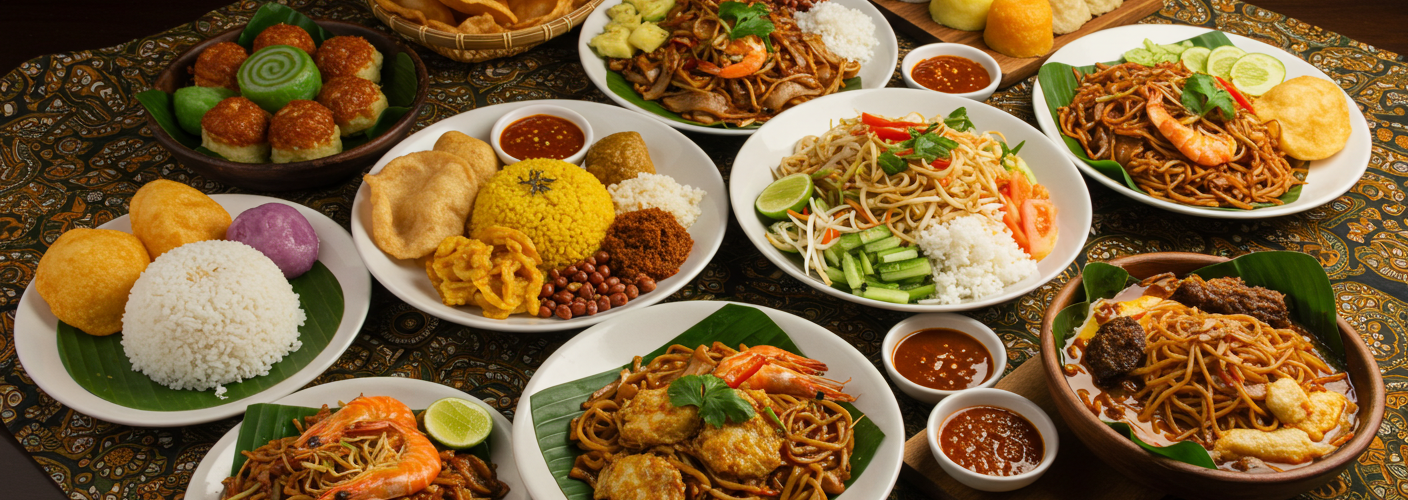Malaysian food is a vibrant reflection of the nation’s cultural diversity, comprising a unique blend of Malay, Chinese, Indian, Peranakan, and indigenous influences. This splendid fusion of flavors, textures, and aromas invites food lovers to experience a gastronomic journey like no other. In this article, we will delve into some iconic dishes that define Malaysian cuisine and explore the cultural significance behind them.
One cannot talk about Malaysian food without mentioning Nasi Lemak. Considered the national dish, Nasi Lemak typically consists of fragrant rice cooked in coconut milk, served with a spicy sambal, crispy anchovies, roasted peanuts, boiled eggs, and often accompanied by cucumber. A comforting meal, it is enjoyed at any time of the day, especially for breakfast. The layers of flavors from the sambal, combined with the creaminess of the coconut rice, offer a wonderful introduction to Malaysia’s culinary charm.
Another beloved staple is Mee Goreng. This fried noodle dish epitomizes the fusion of cultural influences in Malaysia. Often stir-fried with a mix of soy sauce, chili, garlic, and various vegetables, it can be customized with proteins such as chicken, shrimp, or tofu. Vendors often include lime wedges on the side, adding a zesty touch that perfectly complements the savory flavors of the dish. Mee Goreng is a popular street food, showcasing Malaysia’s love for flavorful and satisfying meals.
Moving onto the Indian influence in Malaysian cuisine, we encounter Roti Canai, a flaky flatbread which is often served with dhal or curry. The preparation process involves folding and spinning the dough until it’s paper-thin before cooking it on a griddle, resulting in a wonderfully crispy exterior and soft interior. Roti Canai is a delightful example of comfort food that brings people together, frequently enjoyed for breakfast or as a late-night snack.
Next is Satay, a dish enjoyed by many across the Asian continent but distinctly cherished in Malaysia. These skewers of marinated meat, often chicken or beef, are grilled over an open flame, giving them a delicious smoky flavor. They are usually served with a side of peanut sauce, cucumber, and rice cakes, making for a perfect appetizer or a shareable dish during gatherings. The communal aspect of sharing Satay while enjoying the lively atmosphere of a night market is a quintessential Malaysian experience.
A trip through Malaysian gastronomy would be incomplete without mentioning Laksa, a spicy noodle soup that varies across the country. The two most famous varieties are Asam Laksa, characterized by its sour fish soup and thick rice noodles, and Curry Laksa, featuring curry-flavored coconut milk broth with a mix of noodles and toppings. Each version represents the regional flavors and ingredients available, highlighting the country’s diversity through each spoonful.
Finally, we must not overlook Kuih—a delightful assortment of bite-sized treats that come in various shapes, colors, and flavors. These traditional snacks often incorporate rice flour, coconut milk, and palm sugar, and are enjoyed during special occasions or as a sweet treat to accompany a cup of tea.
In conclusion, Malaysian food is more than just sustenance; it is a celebration of cultural identity, history, and community. The intricate interplay of diverse ethnic backgrounds has resulted in a culinary landscape that is rich, varied, and delicious. Whether you’re enjoying a plate of Nasi Lemak or savoring the complex flavors of Laksa, you’re partaking in a unique experience that embodies the heart and soul of Malaysia.




Add comment